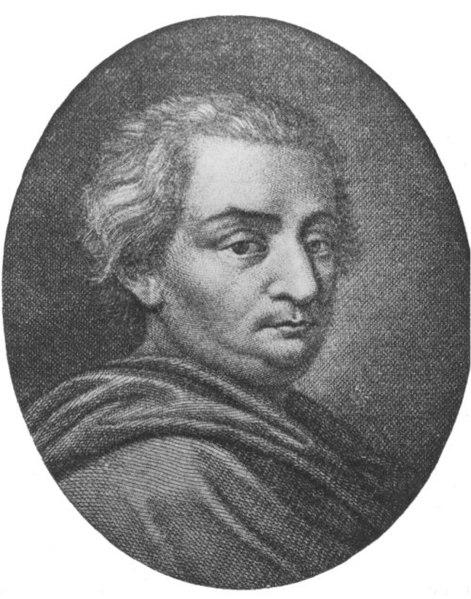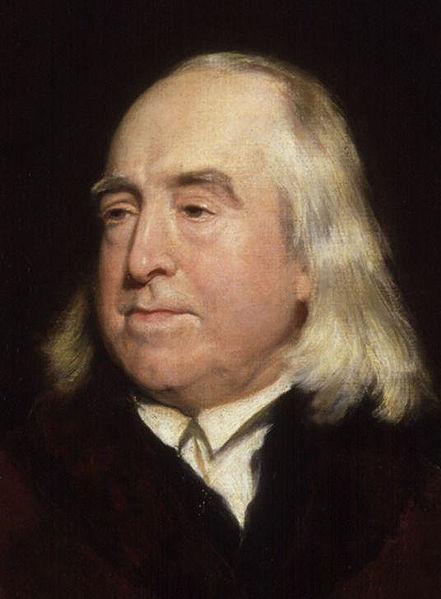5.3 The Origins of Classical Criminological Theory
During the Middle Ages, theological explanations assumed human beings broke laws or didn’t conform to conventional norms of society because of spiritual problems. A law breaker was typically thought to be possessed by demons or the devil or was a wizard or witch. These explanations assumed that when an individual broke a God-given “natural law,” they had sinned. Thus, crime was equivalent to sin. Governments had the moral authority to punish criminals or sinners and the state was acting on behalf of God. As a result, the accused person could “prove” their innocence in a trial by battle, where only the victor was innocent, or trial by ordeal, where the innocent party would be unharmed while the guilty party would feel pain. Punishments and justice were arbitrary and severe, especially when feudal lords, with God’s permission, determined guilt. A person’s rank, status, and or wealth determined their punishment, rather than the merits of the case at hand.
As humans moved through the Renaissance, the Age of Enlightenment, and the scientific revolution, they began to develop frameworks that went beyond theological explanations of human behavior. Auguste Comte (1851), an early sociologist, was interested in epistemology, or in other words, how humans obtain valid knowledge. He claimed human being’s progression of knowledge went through three separate stages: theological, metaphysical, and scientific. The theological stage used supernatural or otherworldly powers to explain behaviors, the metaphysical used rational and logical arguments, and the scientific used positivism and scientific inquiry.
Classical School
During the Enlightenment, from about 1600 to 1800, citizens and social thinkers began to question being governed by appointed rulers. In Leviathan (1651), Thomas Hobbes wanted a new type of government, one that was ruled by the people and not by monarchs. He argued that humans were naturally in conflict with one another, pursued their self-interests, and were rational. He believed people had natural rights such as life, liberty, and the pursuit of happiness. Since humans have a natural tendency to seek authority figures out to protect them from others, then these authority figures should be democratically chosen and create rules that all citizens must follow.
Hobbes was one of the first social contract thinkers. Social contract thinkers believed people would invest in the laws of their society if, and only if, they knew the government protected them from those who broke the law. Essentially, people would give up some of their self-interests as long as everyone reciprocates.
In addition to being rational, Hobbes and other social contract thinkers believed that humans have free will. Humans are able to choose one action over another based on perceived benefits and possible consequences. They also believed that human beings are hedonistic. Hedonism is the assumption that people will seek maximum pleasure and avoid pain.
In classical theory, this means that people are responsible for their actions because the action is a choice. These assumptions have been the basis for the American criminal justice system since its inception. The understanding of criminal behavior and the philosophies of punishments over time may have changed, but the criminal justice system is based on the assumption that committing a crime is a choice and offenders are totally responsible for their actions.
Reformers of Classical Theory
Cesare Beccaria (1738–1794), as seen in figure 5.2, was an Italian mathematician and economist who wanted to change the excessive and cruel punishment practices being used in Europe by applying rationalistic, social contract ideas. Beccaria is considered the father of the classical school of criminology and a prominent figure in penology. To protest the unfair treatment of accused criminals, he anonymously wrote An Essay on Crimes and Punishment (1764), which attacked the power of judges to determine guilt and create laws based on their decisions. Intellectuals received his essay well, but the Catholic Church banned it. His ideas were exceptionally radical, mainly because his writing questioned the power structures at the time.

Beccaria laid out his ideas about legal reform, including how and why to create effective punishments. He advocated that punishments should fit the crime and be proportional to the harm done. He also said that laws should only be determined by the legislature, that judges should only determine guilt, and that every person should be treated equally under the law. He claimed the sole purpose of the law was to deter people from committing the crime. Deterrence, which will be covered in more detail in Chapter 8, can be accomplished if the punishment is certain, swift, and severe.
First, by making certain that individuals know that offenses will be punished, there will be a deterrent factor. Second, the speed of punishment impresses upon individuals that they won’t be able to delay legal consequences, and so they will not offend. Third, according to Beccaria, “For punishment to attain its end, the evil which it inflicts has only to exceed the advantage derivable from the crime…. All beyond this is superfluous and for that reason tyrannical” (Beccaria, 1963). In saying this, Beccaria referred to the severity or amount of punishment. It is not how much punishment that is the primary motivator of deterrence, rather, the certainty. These may seem like common sense today, but they were considered radical ideas at the time.
Jeremy Bentham (1748–1832), pictured in figure 5.3, was an English philosopher and a founder of utilitarianism. Utilitarianism is the belief that decisions are considered right or wrong depending on how effective those decisions are at producing the desired outcome. Essentially, if a punishment was severe enough to make an individual think twice about committing a crime, fewer crimes would be committed if punishments were severe; this is an early example of deterrence. Based on this theory, punishment would promote happiness throughout society by helping to reduce crime. He helped popularize classical theory throughout Europe (Bentham, 1823).

Deterrence
Deterrence theory tries to change a person’s behavior through laws and punishments. Deterrence is the belief that perceived punishments will serve as a warning of possible consequences and will discourage a person from committing the crime.
There are two types of deterrence: general deterrence and specific deterrence. General deterrence uses punishment to deter crime among people in the general population. It uses punishment as an example for those people who are not being punished. Specific deterrence uses punishment to reduce the crime of particular persons.
Specific Deterrence
Specific deterrence aims to dissuade an individual offender from committing future crimes by imposing penalties or consequences for their actions.
Example: A college student is caught plagiarizing an assignment. The professor assigns a failing grade for the assignment, issues a formal warning, and schedules a meeting with the student to discuss academic integrity policies. The student faces the immediate consequence of a lower grade and the potential for further disciplinary action if they engage in academic dishonesty again. This specific consequence aims to deter the individual student from future instances of plagiarism by directly addressing their behavior and its consequences.
General Deterrence
General deterrence seeks to prevent potential offenders from committing crimes by showcasing the consequences faced by others who engage in similar behavior.
Example: A college campus implements a zero-tolerance policy for underage drinking and hosts informational sessions during orientation week, highlighting the legal penalties and disciplinary actions associated with alcohol-related offenses. Additionally, campus police conduct regular patrols and enforce alcohol regulations, issuing citations and fines to students found violating the policy. Through these measures, the college aims to deter all students from engaging in underage drinking by demonstrating the potential consequences faced by those who violate the rules. This broader approach to deterrence aims to influence the behavior of the entire student body, not just individual offenders, by emphasizing the repercussions of illegal activities.
Licenses and Attributions for The Origins of Classical Criminological Theory
Open Content, Shared Previously
“The Origins of Classical Criminological Theory” by Sam Arungwa, Megan Gonzalez, and Trudi Radtke is adapted from “5.3. Pre-Classical Theory, 5.4. Classical School” by Brian Fedorek in SOU-CCJ230 Introduction to the American Criminal Justice System by Alison S. Burke, David Carter, Brian Fedorek, Tiffany Morey, Lore Rutz-Burri, and Shanell Sanchez, licensed under CC BY-NC-SA 4.0. Revisions by Roxie Supplee, licensed under CC BY-NC-SA 4.0, include brief edits for style.
“Deterrence” is adapted from “8.3. Deterrence” by David Carter in SOU-CCJ230 Introduction to the American Criminal Justice System by Alison S. Burke, David Carter, Brian Fedorek, Tiffany Morey, Lore Rutz-Burri, and Shanell Sanchez, licensed under CC BY-NC-SA 4.0. Modifications by Megan Gonzalez, revisions by Roxie Supplee, licensed CC BY-NC-SA 4.0, include adding new examples.
Figure 5.2. Image of Cesare Bonesana di Beccaria is in the Public Domain.
Figure 5.3. Image of Jeremy Bentham is in the Public Domain.
A system of rules enforced through social institutions to govern behavior.
A penalty imposed on someone who has committed a crime.
An approach to criminology that emphasizes the use of scientific methods to study crime and develop solutions.
The philosophical idea that pleasure is the primary good and that people naturally seek to maximize pleasure and avoid pain.
An explanation that attempts to make sense of our observations about the world.
The criminal justice system is a major social institution that is tasked with controlling crime in various ways. It includes police, courts, and the correction system.
The goal of discouraging criminal behavior through punishment or the threat of punishment.

